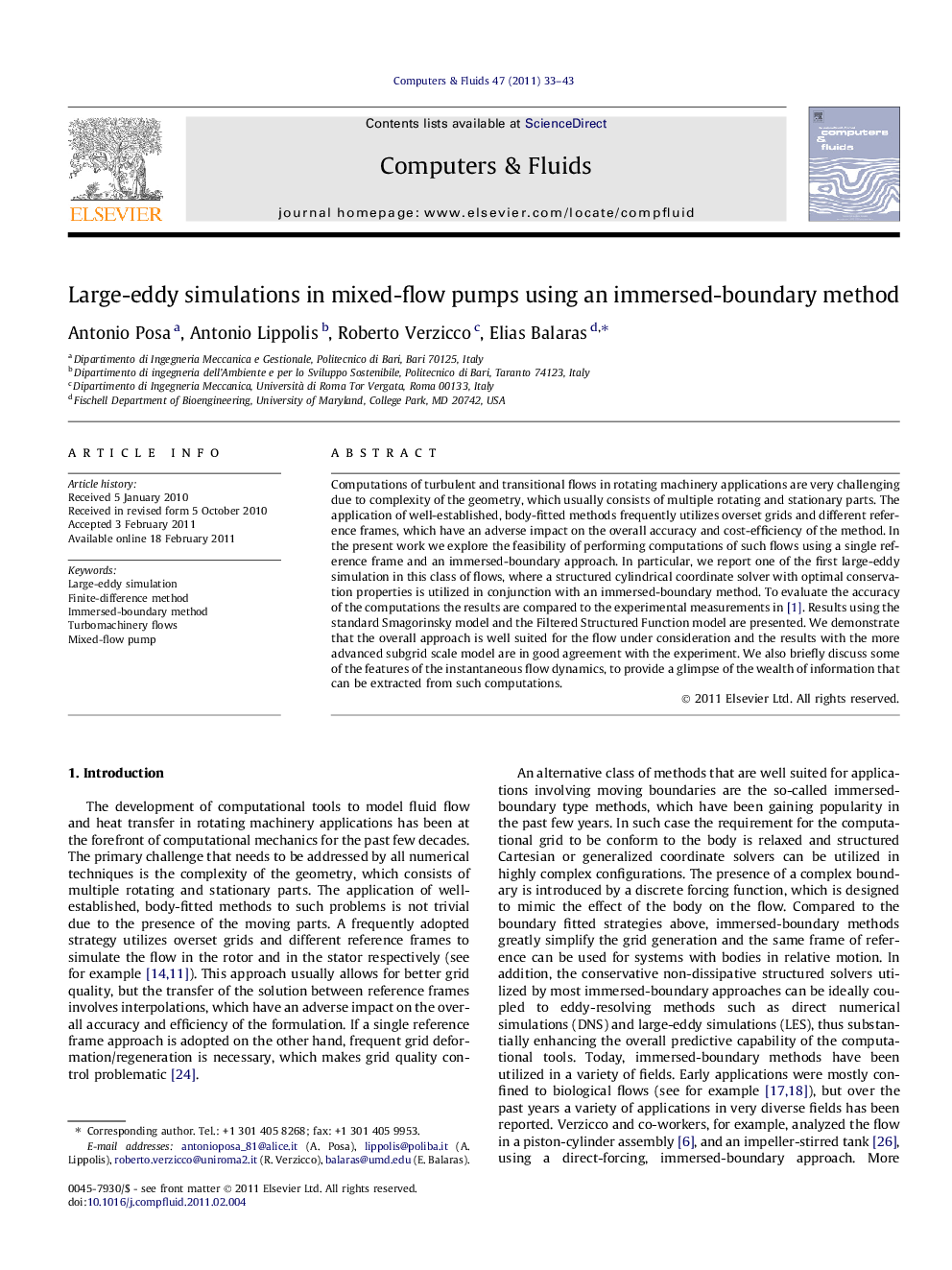| Article ID | Journal | Published Year | Pages | File Type |
|---|---|---|---|---|
| 762832 | Computers & Fluids | 2011 | 11 Pages |
Computations of turbulent and transitional flows in rotating machinery applications are very challenging due to complexity of the geometry, which usually consists of multiple rotating and stationary parts. The application of well-established, body-fitted methods frequently utilizes overset grids and different reference frames, which have an adverse impact on the overall accuracy and cost-efficiency of the method. In the present work we explore the feasibility of performing computations of such flows using a single reference frame and an immersed-boundary approach. In particular, we report one of the first large-eddy simulation in this class of flows, where a structured cylindrical coordinate solver with optimal conservation properties is utilized in conjunction with an immersed-boundary method. To evaluate the accuracy of the computations the results are compared to the experimental measurements in [1]. Results using the standard Smagorinsky model and the Filtered Structured Function model are presented. We demonstrate that the overall approach is well suited for the flow under consideration and the results with the more advanced subgrid scale model are in good agreement with the experiment. We also briefly discuss some of the features of the instantaneous flow dynamics, to provide a glimpse of the wealth of information that can be extracted from such computations.
